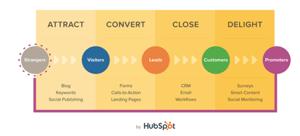Bounce rate is an online marketing term used in web traffic analysis that influences your website rankings.
Do you constantly look at your analytics to find out how users interact with your website? It is important to understand what makes a website visitor happy and what does not, as Google will rank your website depending on this information – along with other factors of course.
You could be penalised or rewarded based upon your website SEO strategy…so what do you choose?
This blog from the Huble Digital search team provides an introduction to the popular bounce rate metric and looks at how you should interpret and improve it for better Google Search rankings.
How to reduce Bounce Rate
The bounce rate is calculated as a percentage that shows the number of visitors that came to your website and left without navigating any further through your web pages.
The bounce rate provides very valuable information because it shows which pages are not engaging your web visitors, are ranking for the wrong keywords or are not providing useful information that your visitors need to read. In any case, opportunities for conversion are being missed out.
There is a huge competition on the web and when someone reaches your website it is your business’ opportunity to shine.
Introduce your business to them, engage with them and show them you are what they are looking for. Don’t miss out on a business opportunity by offering poor quality webpages or content that is not interesting to read.
A good bounce rate will vary, taking into account the nature of the page (blogs have generally higher bounce rates) and industry; but we consider that a webpage is performing well if the bounce rate is below 60%. Pages with a bounce rate higher than 60% need special attention.
Remember that the higher the bounce rate is, the less engaging the page is and this means that either the page didn’t invite the user to navigate further or that visitors were disappointed with the content that was shown on the page and left.
Attention needs to be given to high bounce rate pages to understand what is making people leave your website. For example:
It is important to keep an eye on the high bounce rate pages to check if SEO or content marketing changes need to be made on the page in order to bring the bounce rate down.
We advise that your website should follow the inbound methodology to make sure content is always appropriate for your target audience’s needs, in any of the stages that can be seen in the image below from Hubspot.

This means that content will be useful for your prospects, will answer their questions and educate them - making your business a valuable resource that they will want to return to again and again for answers.
Targeted, interesting content will also invite users to learn more about your brand and invite them to navigate further towards an opportunity for conversion – this onward journey will keep bounce rates low.
Our 5 tips for reducing Bounce Rate are:
-
Improve the design of your website so that it is visually appealing and not cluttered with large amounts of text.
-
Implement user-friendly website navigation that is clear and easy to follow. Avoid navigation bars that have endless drop-down options. Think simple, clean, and effective.
-
Place easy next steps to follow which invite users to navigate through your website and opportunities to convert by accessing a piece of larger content.
-
Use attractive fonts, colours, videos and pictures that make your content attractive and interesting.
-
Offer a great experience for users by providing the latest content that they are looking for on the industry trends or challenges that your customers are facing.
Remember that it is all about offering a good user experience to your web visitors. Google, and other search engines, monitor how visitors engage with your content and will determine the rank of your web pages by comparing bounce rates with other ranking factors. So offer valuable content that will engage website visitors’ interest and therefore keep bounce rates low.








.png)





